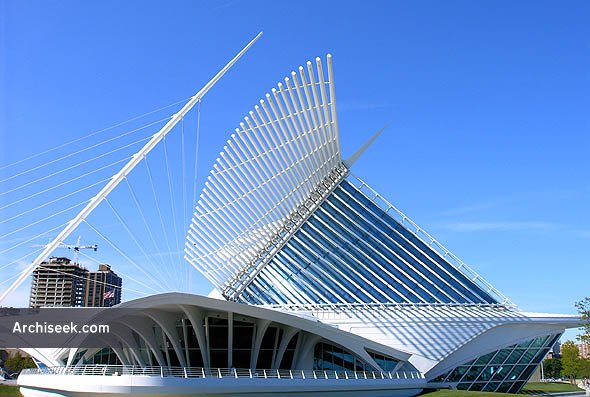2001 – Quadracci Pavilion, Milwaukee Art Gallery, Wisconsin

The Milwaukee Art Museum’s expansion project, completed in October 2001, has significantly expanded the Museum’s role as a comprehensive art institution and strengthened its position as a cultural cornerstone for the Milwaukee community and region. This project, named Time magazine’s “Best Design of 2001”, features the new Santiago Calatrava designed Quadracci Pavilion, renovated and reinstalled Collection galleries in existing Museum buildings designed by Eero Saarinen and David Kahler, and The Cudahy Gardens designed by noted landscape architect Dan Kiley.
The first Calatrava-designed building to be completed in the United States, the Quadracci Pavilion cost approximately $121 million. Signature elements of the Calatrava design include the Reiman Bridge, a 250-foot-long suspended pedestrian bridge that links downtown Milwaukee directly to the lakefront and the Museum. The bridge features a distinctive 200-foot angled mast with cables and reflects Calatrava’s unique experience in bridge design throughout Europe. The Museum’s main entrance leads into a parabolic-shaped, glass-enclosed Windhover Hall with a 90-foot high ceiling. The Burke Brise Soleil, the moveable, wing-like sunscreen comprised of 72 steel fins, rests on top of the glass-enclosed reception hall.



